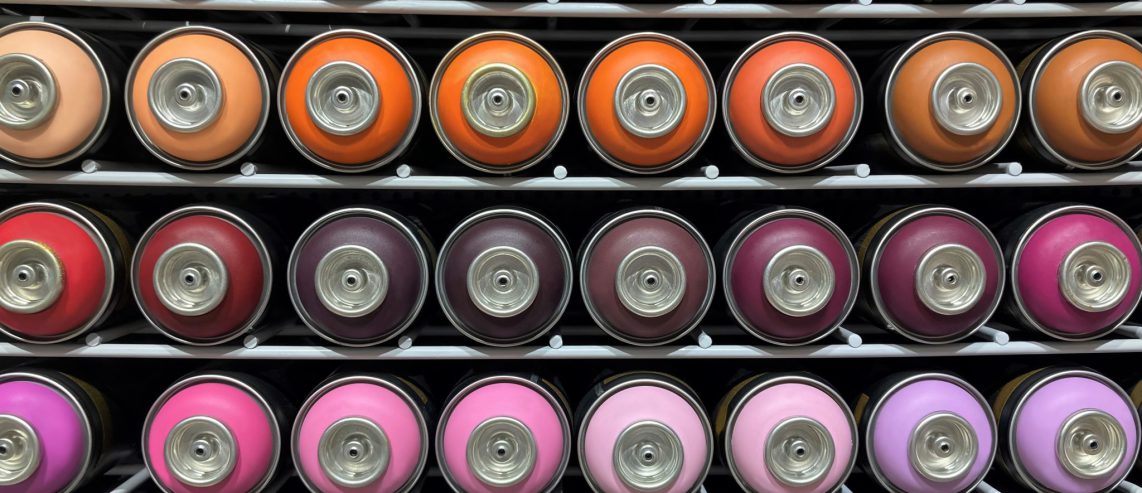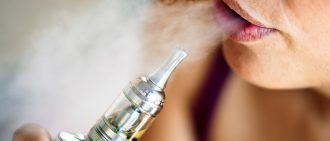“Chroming” refers to the act of inhaling aerosol metallic paint to get high. It is also a blanket term for inhaling many other household products or other chemicals.
When chroming, people try to inhale the hydrocarbons in metallic paints and other products. This can produce a high but also cause severe short-term and long-term health effects — including death.
The concept of chroming has existed for many years under different names. According to the 2021 National Survey on Drug Use and Health, 2.2 million Americans ages 12 and older used inhalants. Children ages 12 to 17 represented the highest percentage of users.
More recently, chroming is trending through social media. A “chroming challenge” went viral on the video platform TikTok in the spring of 2023. Adolescents and teenagers are most at risk.
“This is a variation of an old theme of huffing all sorts of hydrocarbons,” says Anthony Pizon, MD, chief, Medical Toxicology, UPMC. “People have been huffing metallic paints for a long, long time. This is really not new; maybe it’s just been rediscovered.”
New Here - Living and Wellness
What Is Chroming?
Chroming is the inhalation of aerosol paint and other chemical products in an attempt to get high. In previous years, people often referred to this as “huffing.”
“They’re trying to huff the hydrocarbons that are mixed in those metallic paints,” Dr. Pizon says. “And because they’re kind of metallic and shiny, they sort of have that chrome-like shiny appearance.”
Hydrocarbons are present in many different household products, including aerosol paint, paint thinner, motor fuel, and glue. Inhaling them can create a high, which causes many people to use them as a drug of abuse. People may inhale the chemicals in different ways — breathing in the fumes directly or using something like a bag or rag.
“Usually, the specific hydrocarbon that people are seeking in metallic paints is something called toluene,” Dr. Pizon says.
“Toluene is inebriating. It gives you kind of that drunken feeling. The harm can be depending on how they go about huffing it.”
Dr. Pizon says many adolescents and teens may not realize the problems of chroming. They’re familiar with many of the products that contain hydrocarbons and may not see them as dangerous. For example, they may use spray paint on art projects.
“It’s easily accessible, and it seems innocuous,” he says.
But like drug use, chroming can cause dangerous effects on your health, both in the short term and long term. It can even prove fatal.
Never Miss a Beat!
Subscribe to Our HealthBeat Newsletter!
Thank you for subscribing!
You can now select the specific newsletters you'd like to receive.
You are already subscribed.
Subscribe to more newsletters in our email preference center.
Sorry, an error occurred. Please try again later.
Get Healthy Tips Sent to Your Phone!
Dangers of Chroming
The biggest danger of chroming is death. The National Institute on Drug Abuse estimated in 2011 that inhalants caused 100 to 200 deaths in the U.S. each year. But it’s possible that is an underreported statistic. Chroming can cause death through:
- Asphyxiation.
- Cardiac arrest.
- Choking.
- Coma.
- Convulsions or seizures.
- Fatal injury.
- Suffocation.
“If you’re not careful, particularly when using a bag, you can eliminate oxygen and basically suffocate to death,” Dr. Pizon says. “Some people even put the bag over their heads. So, suffocation is a big issue because you’re displacing oxygen.”
Death from using inhalants can happen very quickly. There’s even a condition called “sudden sniffing death” that happens when a person goes into cardiac arrest or failure after using inhalants.
Dr. Pizon says chroming also can affect your body’s electrolytes. For example, it can cause potassium levels to get very low. That can lead to cardiac dysrhythmia, muscle weakness, and other harmful effects.
Other short-term effects of chroming and other forms of inhalation include:
- Breathing trouble.
- Drowsiness.
- Headache.
- Lethargy.
- Muscle weakness/loss of muscle control.
- Nausea and vomiting.
- Seizures.
- Stupor.
Long-term effects of chroming/inhaling include:
- Addiction.
- Bone marrow damage.
- Brain damage.
- Heart damage/heart failure.
- Kidney and liver damage.
- Mental health-related disorders.
- Neurological conditions.
- Respiratory damage.
“You’re really putting yourself at risk,” Dr. Pizon says. “It can have really devastating results.”
Chroming Prevention: Educating Kids About Dangers
Education is the best way to protect vulnerable groups like children, adolescents, and teens from the dangers of chroming. They may see chroming as a “safer” alternative to other drug use. But informing them of the dangerous and potentially life-threatening effects of chroming may not prevent them from chroming.
Parents can also help prevent their children from chroming by locking up or disposing of metallic paints and other hydrocarbon-based products.
“Like alcohol, keep it locked up or dispose of it if it’s no longer needed,” Dr. Pizon says. “If you don’t need it anymore and don’t plan to use it, just dispose of it.”
He also says to stay aware of people talking about or showing signs of chroming. If you hear a loved one talking about inhaling substances or you see them exhibiting signs of using, step in. Talk to them or suggest they see a counselor about their substance use.
“I think we can kind of police each other,” Dr. Pizon says. “This seems to be a trend among adolescents and young adults. So, if you happen to notice a friend with metallic paint for no good reason, maybe that’s an opportunity to intervene.
“Or, a lot of times, people will have a metallic color on their face or their hands. And that’s an opportunity to intervene, like, ‘Why do you have gold paint on your hands?’ Or, ‘Why do you have gold paint around your face?’ So, these may be opportunities for parents or friends to recognize that they’re using these in an illicit way and intervene.”
UPMC Children’s Hospital of Pittsburgh provides world-class care for children and their families. For more on our services, visit our website.
Sources
Alcohol and Drug Foundation, Inhalants. Link
American Addiction Centers, Inhalant Abuse: Short- and Long-Term Effects of Inhalants. Link
Kristin W. Brown and Tyler J. Armstrong, StatPearls, "Hydrocarbon Inhalation." Link
Beth Ann Mayer, Parents, "What is Chroming? The Latest Social Media Trend Parents Need to Know About." Link
National Institute on Drug Abuse, Inhalants Research Report, "What Are the Other Medical Consequences of Inhalant Abuse?" Link
Substance Abuse and Mental Health Services Administration, Key Substance Use and Mental Health Indicators in the United States: Results from the 2021 National Survey on Drug Use and Health. Link
About UPMC
Headquartered in Pittsburgh, UPMC is a world-renowned health care provider and insurer. We operate 40 hospitals and 800 doctors’ offices and outpatient centers, with locations throughout Pennsylvania, Maryland, New York, West Virginia, and internationally. We employ 4,900 physicians, and we are leaders in clinical care, groundbreaking research, and treatment breakthroughs. U.S. News & World Report consistently ranks UPMC Presbyterian Shadyside as one of the nation’s best hospitals in many specialties and ranks UPMC Children’s Hospital of Pittsburgh on its Honor Roll of America’s Best Children’s Hospitals. We are dedicated to providing Life Changing Medicine to our communities.













